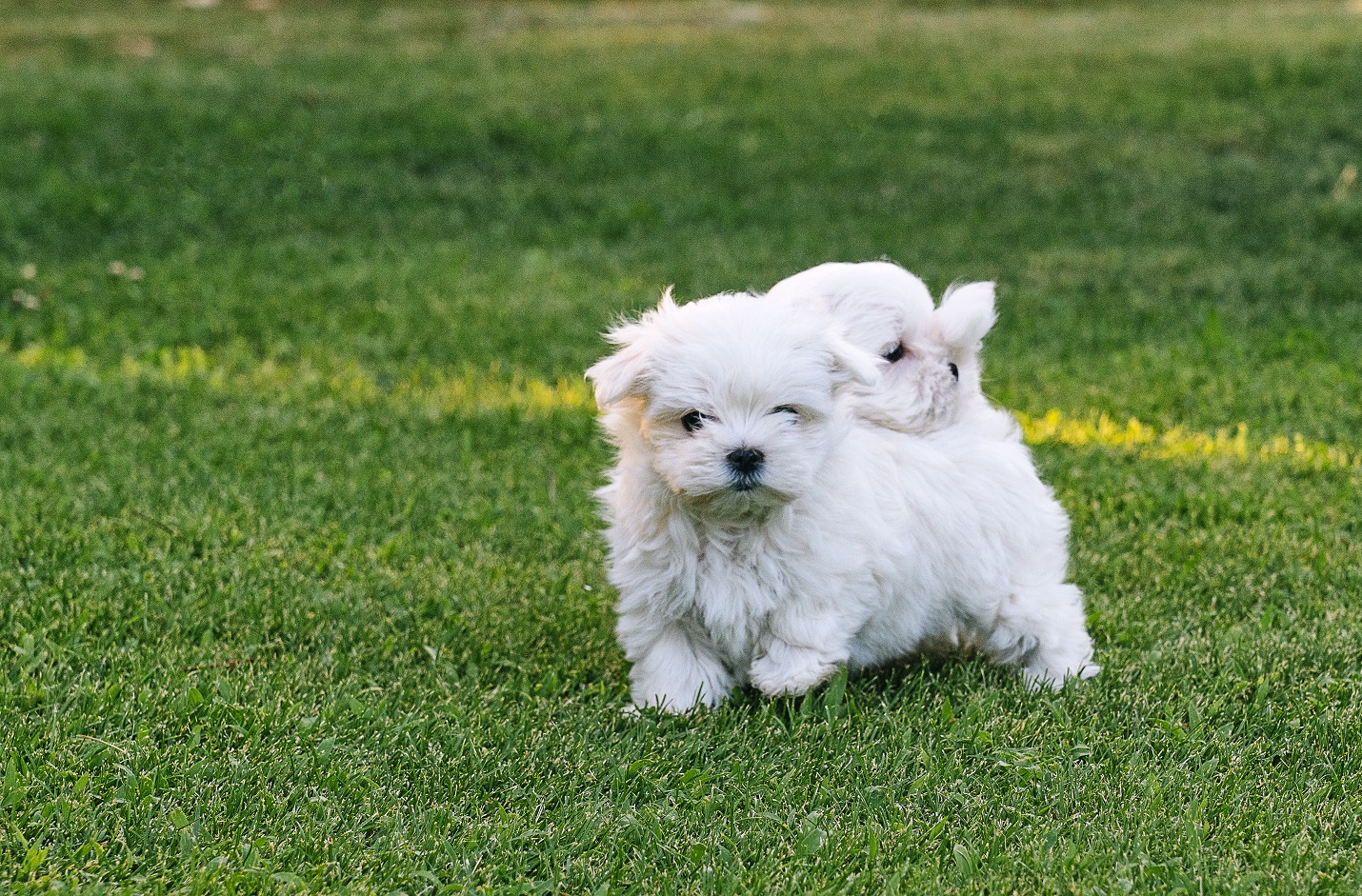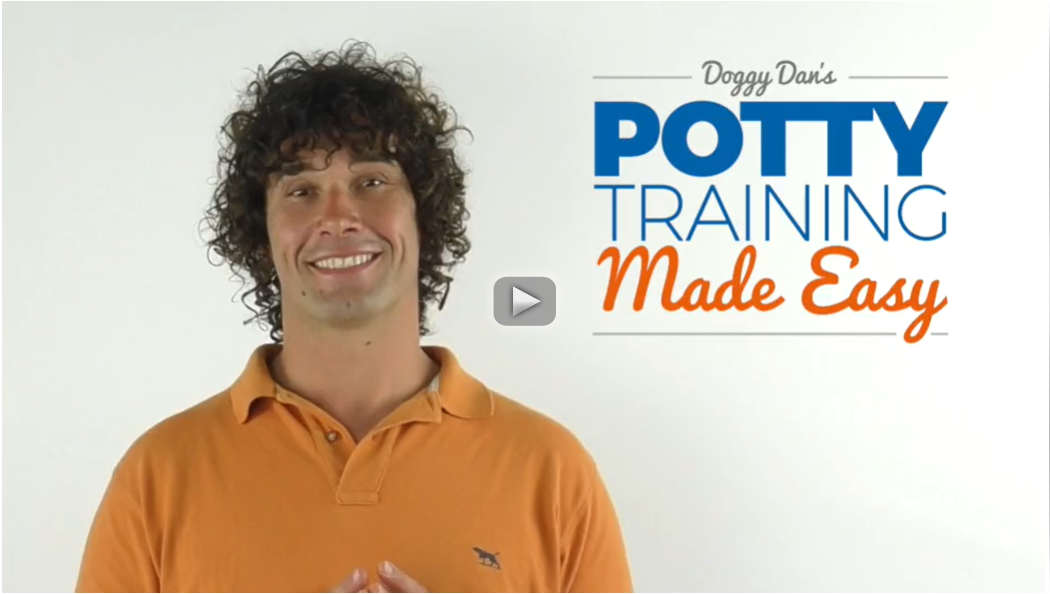If you’re wondering how to potty train a Maltese, you’re in the right place to find out more.
Like many small breeds, the Maltese is a little challenging to potty train. Actually, make that very challenging.
The tiny bladders and mile-wide stubborn streaks of the Maltese don’t make for an easy combo, particularly if you have limited experience of potty training small breeds.
Does that mean you have to consign yourself to a lifetime of scooping up poop from your carpet or mopping up pee from your surfaces?
Not at all.
Ultimately, challenging doesn’t mean impossible.
Sure, getting a Maltese to understand the benefits of doing their business in the yard rather than your laundry basket is tricker than teaching a Labrador the same thing.
But impossible? …Not by a long shot.
Providing you use the right tactics, you can curb that stubborn streak and teach your Maltese to exercise a little control over that pea-sized bladder.
It’s not necessarily going to be a breeze, and there might be some accidents along the way. But apply a little patience and a hefty dose of consistency, and trust me, you’ll get there in the end.
Just remember that potty training is a journey. Regardless of whether you’re dealing with a Maltese, a Spaniel, or a Boxer, no dog will be potty trained to perfection in a day.
Before you despair at the thought of still being in the same position a year down the line, I’ve got some good news for you. There’s a way to make the whole thing a lot quicker and a lot easier than it’d be otherwise.
How?
By watching this Potty Training Made Easy Course from Dan Abdelnoor.
Dan has put the course together as an A-Z of potty training, showing you exactly how to achieve the maximum amount of results in the minimum amount of time.
Before you do anything else, watch the video. It really will make all the difference to your potty training experience.
(video will open in a new window)
The Best Age to Start Potty Training a Maltese
First up, let me set the record straight.
While there might be a ‘best’ age to start potty training a Maltese, that doesn’t mean it’s the ‘only’ age. Training an older dog might come with a few extra challenges, but believe me, old dogs are more than capable of learning a few new tricks.
If you’ve rescued or adopted an older dog, don’t despair if it’s still peeing the bed.
Getting a senior dog to abandon old habits and learn some fresh ones will require plenty of patience. But with time, most dogs, irrespective of age, can be trained in proper bathroom etiquette.
That being said, there’s no getting around the fact that younger dogs tend to be easier to potty train than older dogs.
Not only are puppies too young to have developed any ingrained bad habits, but they’re also more inclined to learn and develop new skills.
Think of the difference between teaching a 10-year-old how to speak French and teaching a 70-year-old. It’s the same with dogs.
The younger they are, the more malleable and open they are to new things. Basically, they’re sponges, ready and willing to soak up every new little titbit of information they come across.
But (and this is a big but), there’s a limit to how young you should go before you start potty training. If you think you can train a 3-week old pup how to ‘hold it,’ you’re in for a nasty surprise.
Until they reach a certain age, water flows through pups like…. well, water. They can’t hold it, shouldn’t be expected to hold it, and presuming otherwise will do nothing except set them (and yourself) up for disappointment.
So, what’s the magic number?
To some extent, it depends on your dog. If they’re smaller than average or blessed with a ‘particular’ kind of personality, you might need to hold out for a little longer.
As a general rule of thumb, however, most dogs can take the first steps on the potty training journey between 12 and 16 weeks old.
By that age, they’ll have developed enough bladder and bowel control to learn how to hold it until they’re in an acceptable place to go.
Related Post: What Age Should A Puppy Be Toilet Trained?
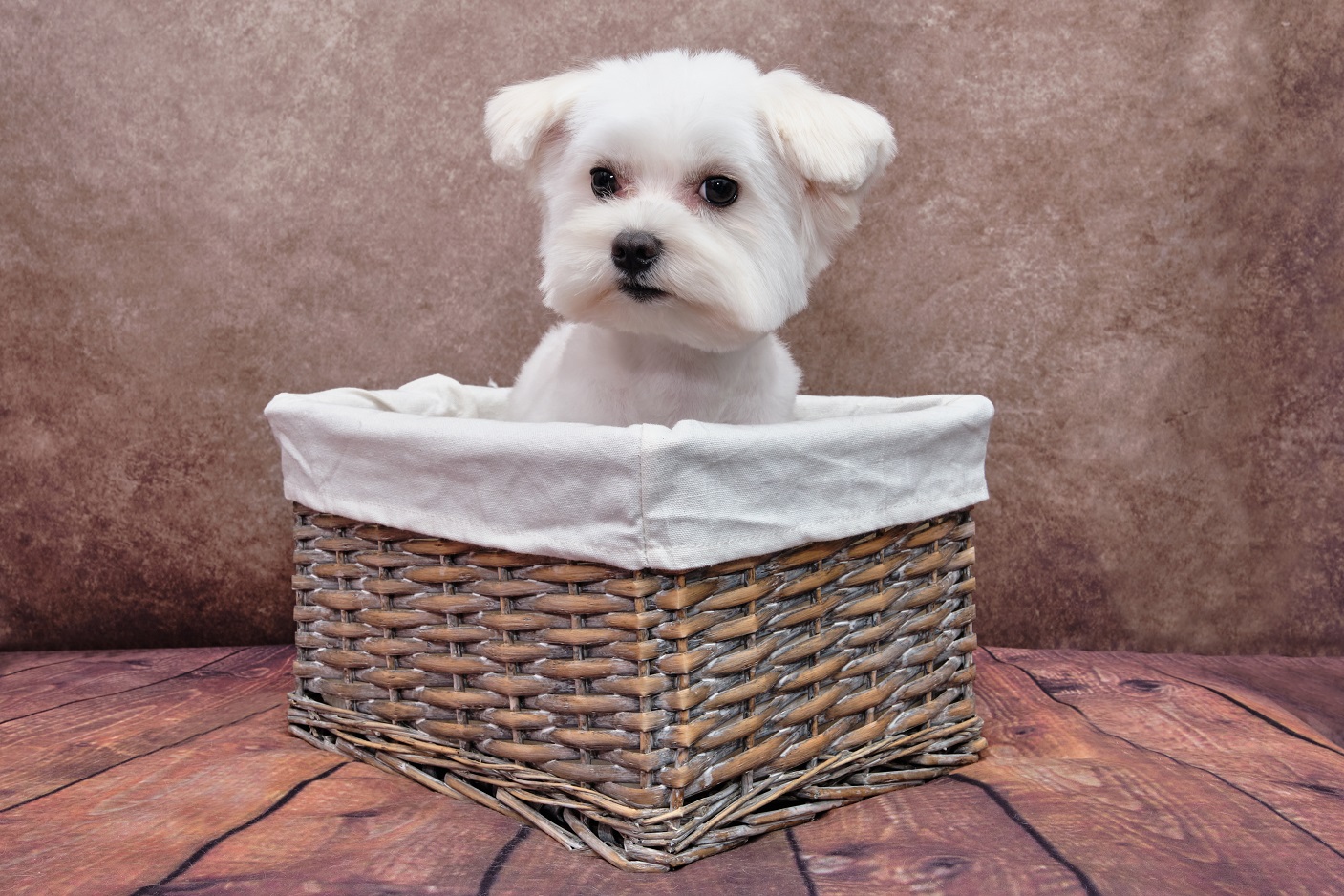
How to Potty Train a Maltese the Easy Way
There’s no getting around the fact that potty training a Maltese can be a headache.
Obviously, that doesn’t mean that every single Maltese in the world is going to be a chore to train. If you’re lucky, you might find yourself blessed with the kind of pup that takes to potty training like a duck to water.
If you’re not, don’t beat yourself up about it.
All dogs are different, and it’s perfectly natural for some to take a little longer to reach a certain point than others. But that doesn’t mean they won’t get there eventually.
The first step in the process is to understand exactly what a good potty training experience looks like. Easier said than done, you might think. Actually, it’s not, as this Potty Training Made Easy Course demonstrates.
If you want to avoid common mistakes and get things off to the best possible start, I’d highly recommend taking a few minutes out to watch the video. The tips and techniques you’ll see aren’t rocket science, but that’s kind of the point.
Providing it’s done in the right way, potty training doesn’t need to be the long, hard slog it’s sometimes presented to be…. as the course makes abundantly clear.
Once you’re done watching the video, complement what you’ve learned with some of the following strategies.
Use Pee Pads Wisely
Some people argue that teaching your pup to go to the bathroom indoors is counterproductive. It’s a valid point, but ultimately, we don’t live in a perfect world.
If your schedule, personal circumstances, or living situation make it difficult to provide regular trips outside, pee pads can be a handy tool to have at your disposal.
As well as offering easy clean-up (like diapers, they absorb easily and come in both disposable and reusable versions)…
…They’re convenient (if you live on the upper floor of an apartment block and can’t get outside in time to catch every accident before it happens, they can be invaluable)
…They’re weather friendly (Malteses, like most small dogs, hate going to potty outside in bad weather).
And they help encourage your dog to go to the potty in one designated spot.
But if you do decide to use them, do it wisely.
If your ultimate goal is to use the pee pads as a stop-gap to outdoor potty training, take the pads outside or stop using them altogether as soon as you start training your pup to go outdoors.
Continuing to use them while you’re also encouraging your pup to only go potty outside can send mixed messages.
Create a Potty Area
Before anything else, choose a spot in the yard where you want your dog to go to the potty. Ideally, this should be in a quiet area free of distractions. If you have kids, make sure it’s well away from any play areas.
It doesn’t need to be a huge space- ultimately, your pup won’t be playing, eating, or doing anything else here other than the essentials.
Once you’ve picked the spot, be consistent in taking your pup there each and every time they need to go potty. The idea is to get them to associate that spot, rather than anywhere in the house, with doing their business.
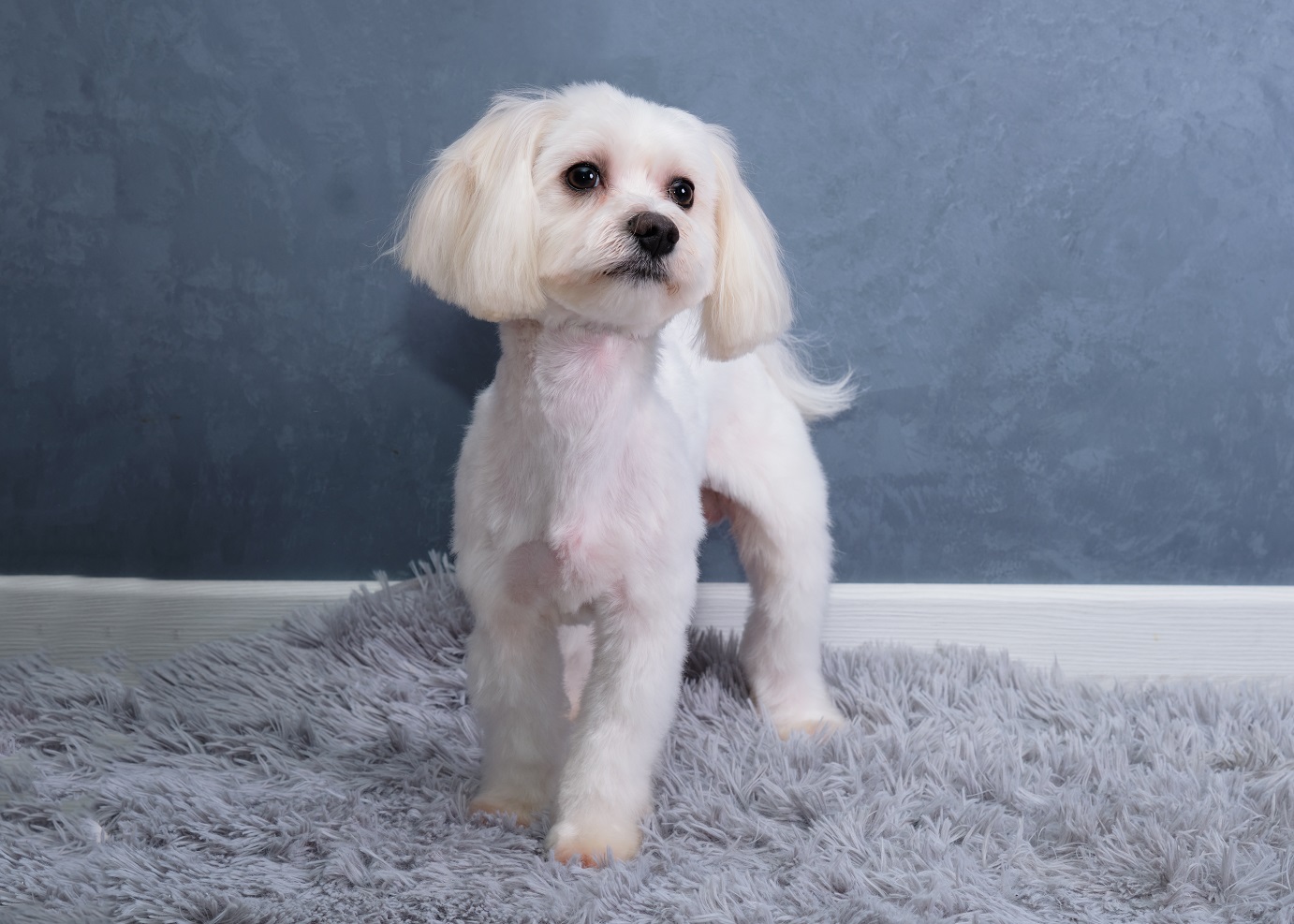
Redirect, But Don’t Punish
Now you’ve created a space you want your dog to use as a bathroom, it’s time to teach them where you don’t want them to go…. i.e. anywhere in the house.
If you’ve been using potty training pads up until this point, now’s the time to either get rid of them or move them outdoors to ease the transition. Continuing to use them indoors while you’re trying to teach your pup to go outside will simply make them confused.
If you do find your pup getting ready to relieve themselves on the carpet, use redirection rather than punishment to encourage them outside.
Scolding, tapping them on the nose, or ‘rubbing their nose’ in any accidents are all outdated nonsense that won’t achieve a thing. Instead, simply pick them up and head outside or use an encouraging tone of voice to call them to the door.
Teach Them To Hold It
Exceptions apply, but most pups can hold it for the number of hours that correspond to their age in months, plus one.
So, for example, a three-month-old pup will usually be able to exercise bowel and bladder control for 4 hours.
To encourage them to exercise control, it’s helpful to use confinement when you’re not around to watch them.
Crates are a great tool to have at your disposal, giving you a safe place to keep your pup and serving as a very useful accompaniment to potty training.
The reason they work so well is simple: dogs hate going to the bathroom in the same place they sleep.
Now obviously, you can’t simply pop your Maltese in the crate, shut the door, and head out for the day. If you shut them away for longer than their bladders can handle, they’re eventually going to go, whether they want to or not.
But providing you use common sense and apply some ground rules, the benefits of crate training can be huge.
To get the most out of the experience, be sure to…
Choose the right size crate…
In this case, bigger isn’t best. The crate should be large enough for them to stretch out, stand up and turn around in, but small enough to ensure they don’t decide to use one half as a bed and the other half as a bathroom.
Make it comfortable…
Your dog’s crate should be a sanctuary. Make it as comfortable as you can by positioning it in a warm, draft-free spot and adding a few blankets and toys to make it homey.
Introduce it gently…
To encourage your pup to develop positive associations with the crate, introduce it to them gradually and use plenty of rewards and praise to encourage familiarity.
Time your pup’s crate sessions carefully…
If you leave them in the crate for longer than their bladders can cope with, they’ll be forced to use it as a bathroom, thereby negating all the potential benefits.
For all the benefits, crate training isn’t for every dog owner and every dog. While most dogs quickly learn to love their little den, others never do.
If your Maltese becomes anxious and frightened around the crate, don’t feel compelled to continue using it. Instead, consider limiting their free rein of the house when you’re out, and supervising them constantly when you’re in.
Related: Solved! How To Toilet Train A Puppy In 7 Days – Housetrain ANY Dog Now!
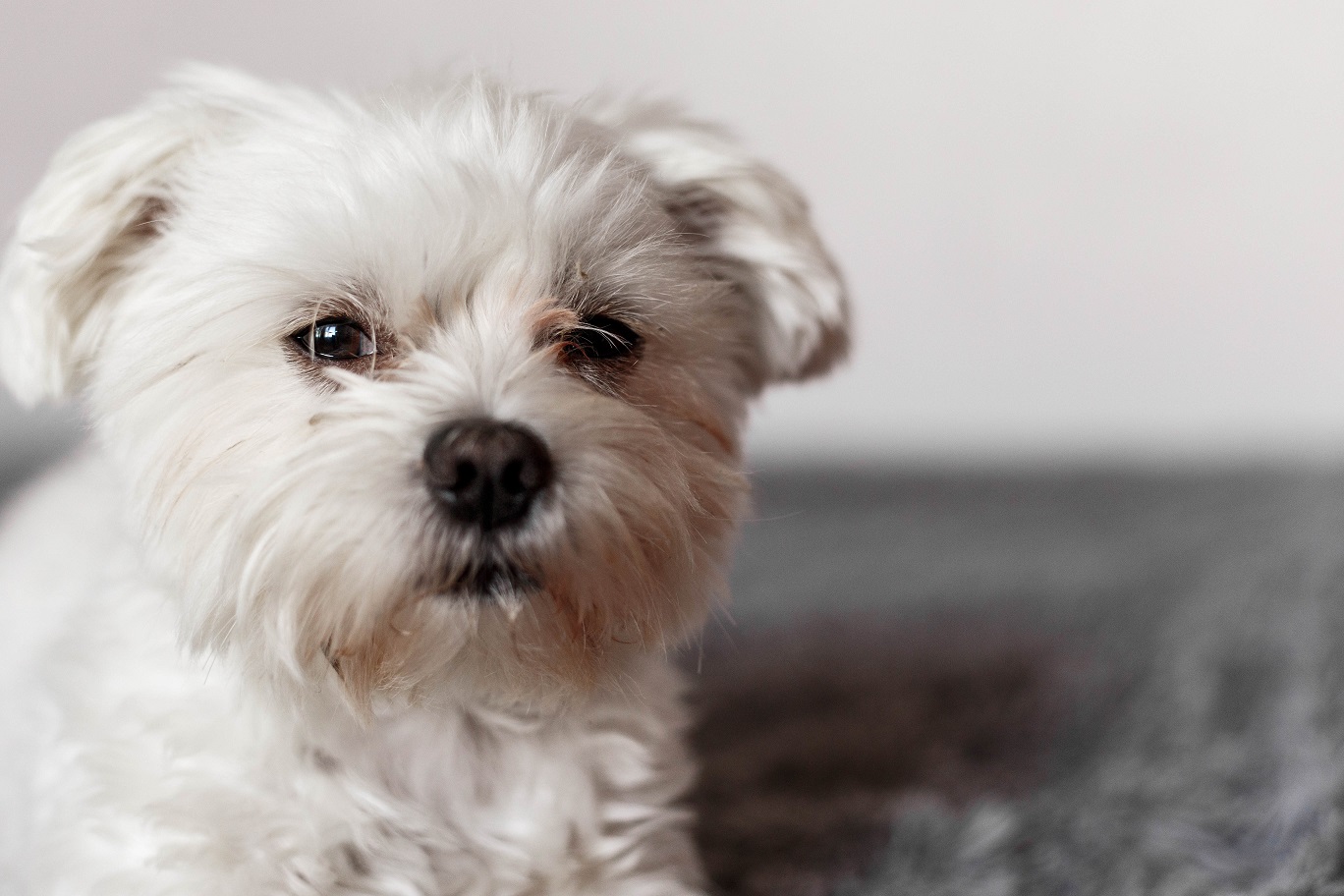
Create a Schedule
What goes in, must come out.
If you want to make life easier for yourself and avoid as many accidents as you can, feed your pup on a schedule. A dog that snacks all day or free feeds is liable to need to go potty at unpredictable times.
By creating a feeding schedule, you’ll be better able to predict exactly when your pup will need to take a bathroom break.
Keep Things Positive
If there’s one thing a Maltese loves, it’s praise.
Each time they go to the potty in their designated spot, be sure to let them know how proud you are by lavishing them with praise and rewarding them with a treat.
The more your pup learns to associate going to potty outside with something positive, the more inclined they’ll be to do it.
Supervise Constantly
Accidents might be inevitable, but there more you can avoid, the better.
Don’t be tempted to allow your pup to run freely around the house without any supervision. Until they know that the kitchen, the bedroom, and anywhere else indoors isn’t their personal bathroom, keep an eye on them at all times.
Some people find it helpful to use a leash indoors to keep their pup within sight. While others prefer to simply keep them in the same room as them.
Either way, keep a close watch out for any warning signs of an impending elimination. If you notice your dog…
- Circling
- Sniffing around at the floor
- Acting restlessly
- Hunching their back
- Heading for a spot they’ve previously peed in
…Don’t waste any time in getting them to the yard.
Pause and Rewind
Sometimes, it can hard to see the wood for the trees.
If you’re feeling bogged down by the whole experience of raising a pup, training a pup, and trying to live your life at the same time, don’t panic. You’re not the first owner to feel overwhelmed, and you’ll certainly not be the last.
If you’re losing sight of the ultimate goal, or if you’re not sure you’re on the right track, it’s time to hit the reset button.
Take some time out to revisit the basics. Refamiliarise yourself with the right techniques by watching the Potty Training Made Easy course. Consider what you’ve achieved so far, what there’s still to do, what’s worked, and what hasn’t.
Most of all, relax. Potty training isn’t a competition. There’s no prize for the dog owner whose pooch crosses the finishing line first.
Take a breath, take a moment, and then carry on. Consistency, patience, and practice really will get you over that finishing line in the end.
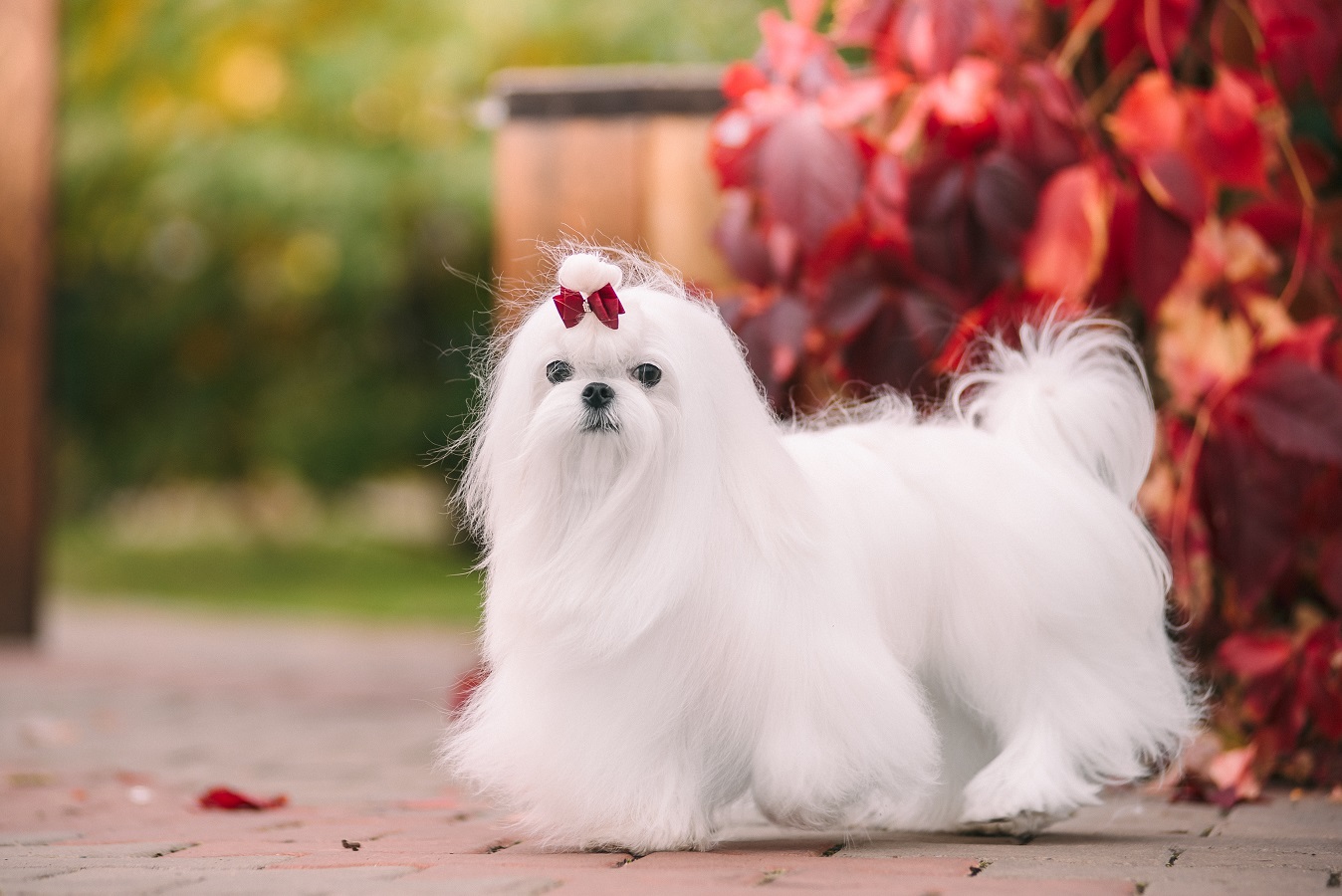
Closing Thoughts
Malteses might not be the easiest dogs to housetrain, but they’re not the worst either.
If your pup’s just offloaded another poop bomb behind the sofa, that’s probably not much consolation. But trust me, very few dogs can’t be potty trained.
With the right amount of patience, kindness, and consistency, the potty training journey will eventually come to an end. And once it does, all the time and effort will be worth it.
